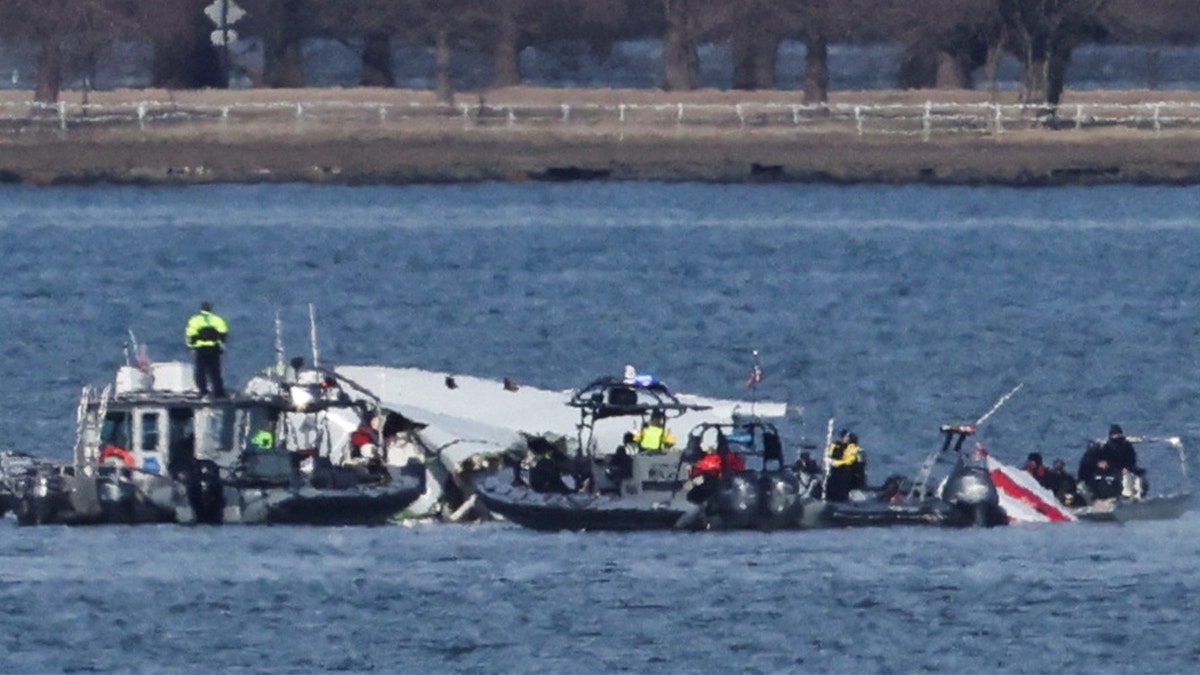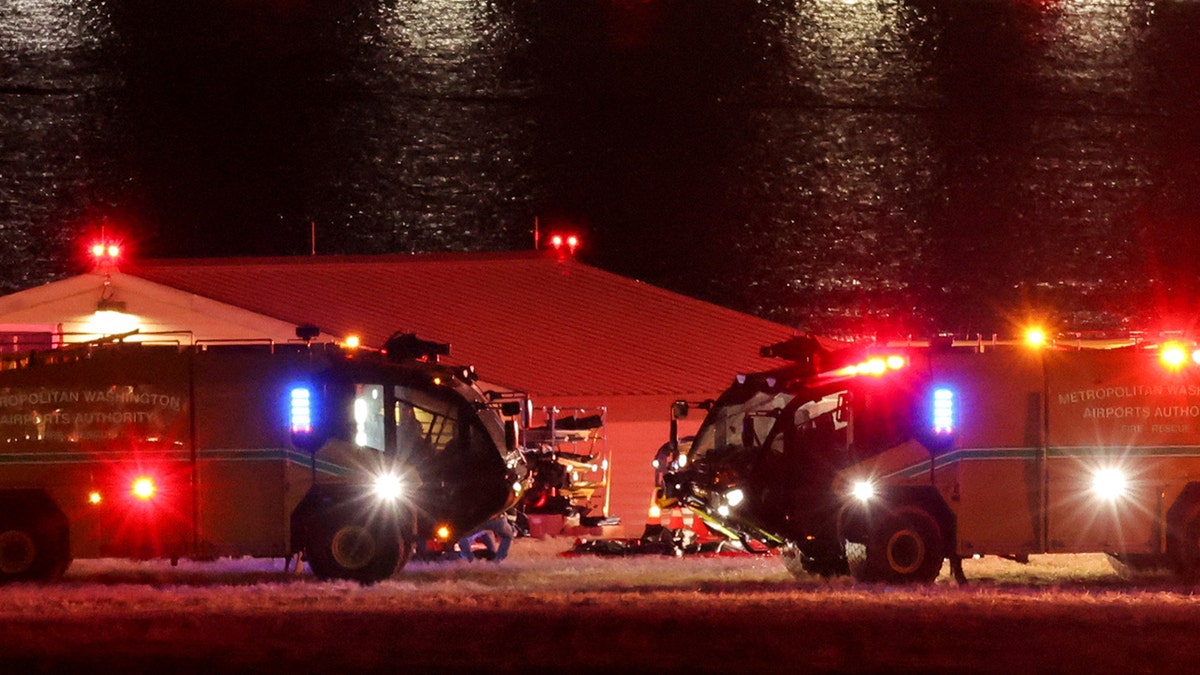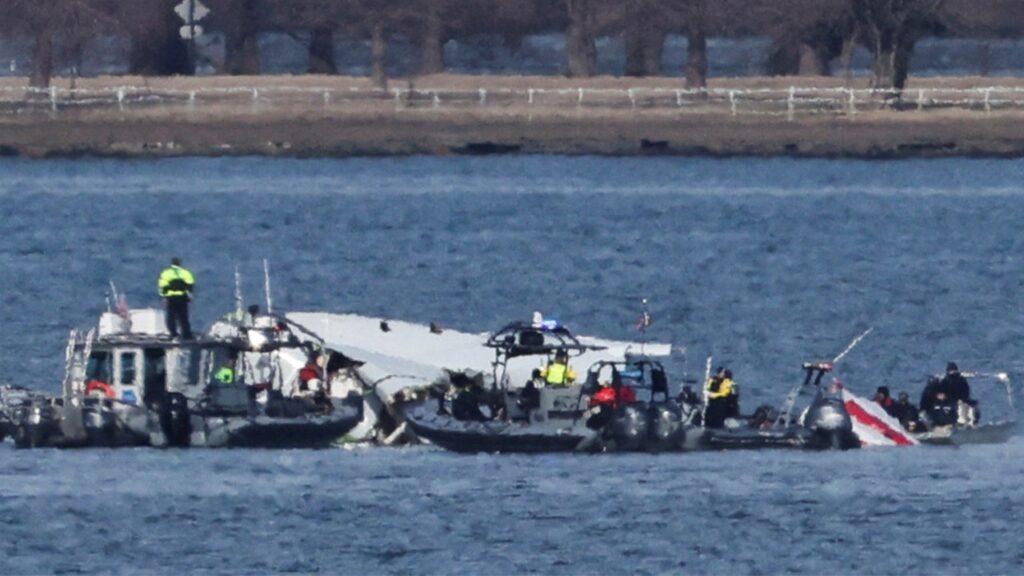The pilot of the military Black Hawk helicopter that crashed with a passenger airplane over Washington, D.C. in January failed to follow instructions to change direction just seconds before the incident, as revealed in a recent report.
The report, released by the New York Times on Sunday, examined the Black Hawk’s communications with air traffic control leading up to the tragic event that killed 67 individuals.
The Black Hawk’s pilot, Capt. Rebecca Lobach, was undergoing her annual flight evaluation, with her co-pilot, Chief Warrant Officer 2 Andrew Loyd Eaves, acting as her flight instructor.
When air traffic controllers alerted the Black Hawk about a nearby airliner, Lobach and Eaves acknowledged the communication and requested to maintain “visual separation,” a standard procedure that lets pilots avoid collisions based on what they see instead of strictly following air traffic control directions.
55 VICTIMS IN WASHINGTON, DC MIDAIR COLLISION PULLED FROM POTOMAC RIVER AS RECOVERY EFFORT CONTINUES

Rescue teams work on recovering debris from the Potomac River after the collision involving American Eagle flight 5342 and a Black Hawk helicopter, as viewed from Virginia on January 30, 2025. (REUTERS/Carlos Barria)
“The Black Hawk was just 15 seconds away from intersecting with the jet. Warrant Officer Eaves then focused on Captain Lobach, suggesting that air traffic control wanted them to turn left towards the east river bank,” the Times reported.
VP VANCE URGES US ‘TO IMPROVE’ AVIATION SAFETY FOLLOWING ‘INCREDIBLY HEARTBREAKING’ DC PLANE CRASH
“A left turn would have created more distance between the helicopter and Flight 5342, which was approaching Runway 33 at about 300 feet altitude. However, she did not turn left,” the report noted.

Victims lie on the ground beside emergency response vehicles at the crash site following the collision between American Eagle flight 5342 and a Black Hawk helicopter while nearing Reagan Washington National Airport, crashing into the Potomac River on January 30, 2025. (Carlos Barria/Reuters)
The crash raised immediate concerns about air traffic control regulations, prompting Transportation Secretary Sean Duffy to start an investigation.
Duffy announced plans in March to enhance airport air traffic control technology over the next four years, incorporating artificial intelligence (AI) to pinpoint “hot spots” where aircraft close encounters frequently happen.
There have been 85 near-misses or close calls at Reagan National, according to a report from the National Transportation Safety Board (NTSB). These close calls were defined as instances with less than 200 feet of vertical space and 1,500 feet of horizontal space between planes.

President Donald Trump listens as Transportation Secretary Sean Duffy speaks during a briefing in the James Brady Press Briefing Room at the White House on Thursday, January 30, 2025. (Alex Brandon/AP Photo)
CLICK TO GET THE FOX NEWS APP
“We’re experiencing near-misses, and if we don’t make changes, lives will be at stake,” Duffy told reporters at that time. “That wasn’t addressed. Perhaps there was emphasis on something other than safety, but under this administration, our priority is safety.”


